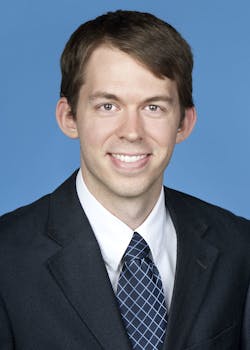Motion Control Integration and FPGAs
Following the release of a video I hosted on the topic of reconfigurable versus traditional motion control systems, featuring Nate Holmes of National Instruments, I wrote a blog post exploring the decisions behind choosing a fixed function controller or a real-time controller and another post looking at FPGAs for control algorithms and I/O and vision synchronization. But there remained one more issue from this video that deserves mention: How FPGAs aid the integration of various motion control aspects.
For lower level control applications, for example, in the drive firmware level, FPGAs can be used for a number of common motion control tasks such as control loops and commutation schemes, motion I/O like an encoder read, reading limit switches, and implementing filters.
“By targeting very specific portions of FPGA code for modification, you can achieve the flexibility you need and still get an application up and running very quickly,” says Holmes. With the “flexibility this approach provides, you can achieve coordinated motion with a FPGA controlled drive and an external smart drive from two different manufacturers. You could also coordinate many different types of motors—using a different type of feedback for each—all without changing the existing trajectory generation or move profile software."
Bottom line: Any functionality provided through the use of modular I/O and an FPGA can be integrated into an axis of motion, and that axis of motion can be integrated with other axes of wildly different configurations, Holmes says.
Despite the clear advantages FPGAs can bring to motion control applications, Holmes is quick to point out that FPGA technology is not always the best fit for every application. For example, if your application “falls within the use cases for which the manufacturer designed the fixed function controller and drive, then you can probably design the system at a lower cost and more quickly using traditional motion systems,” he says. “However, if you are reaching the limits of a high performance machine that needs to be better, faster, smarter, you will probably run into cases where you need advanced I/O, custom synchronization, specialized control algorithms or the need to integrate disparate and/or non-standard subsystems.”
It is at this point that Holmes says a reconfigurable architecture, enabled by FPGAs, become your most effective engineering tool.
For more information visit: www.automationworld.com/nipac
About the Author
David Greenfield, editor in chief
Editor in Chief

Leaders relevant to this article:
